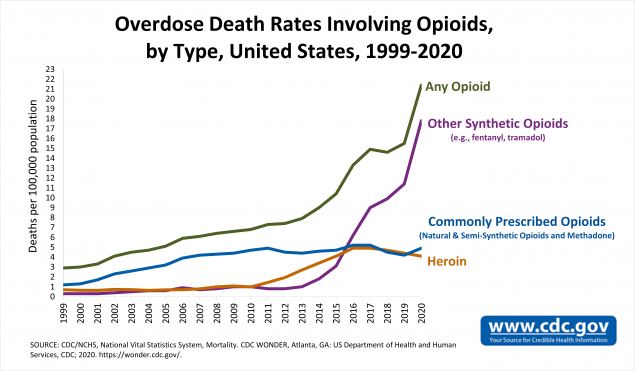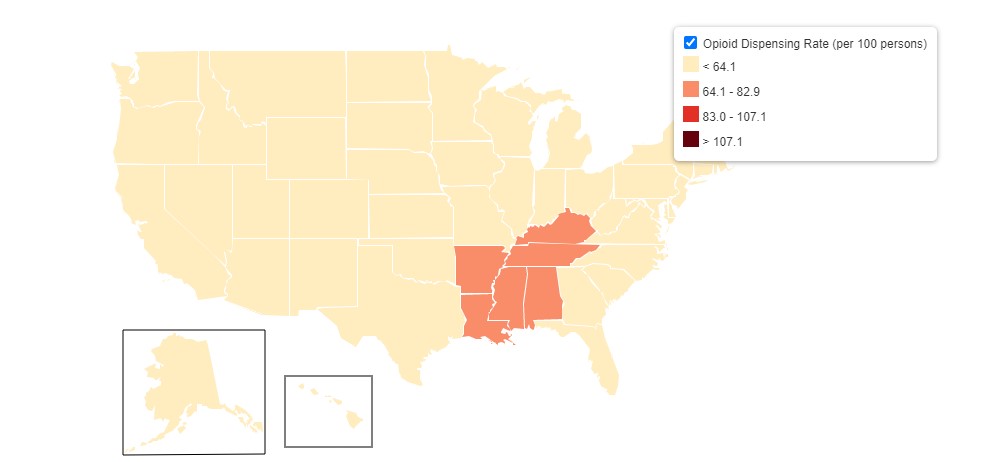Opioids in the United States
2021 Drug Overdose Deaths
%
2021 U.S. overdoses due to opioids
years decrease in U.S. life expectancy in 2020 due to COVID and overdoses
Fentanyl is 100x as potent as morphine
Most people in the United States have been touched by the opioid epidemic, which has taken hundreds of thousands of lives since the 1990s. In 2021 alone, there were 106,699 reported overdose deaths in the U.S., and 75% of those deaths were caused by opioids (National Institute on Drug Abuse, 2022). These numbers are more than just statistics; each individual who died by overdose leaves behind families, friends, and communities in devastation.
The good news is that opioid use disorder is treatable, and there are steps you can take to protect your community. Substance use disorders are a medical issue, just like cancer or diabetes. Individuals with opioid use disorder need medical attention, compassion, and community support to recover.
What are opioids?
Opioids are substances meant to assist with pain management. Some opioids, like Codeine, are commonly prescribed after surgery. Other opioids are created in labs for illicit purposes. However, both illicit and prescription opioids can lead to addiction.

Historically, opioid prescribing rates in the U.S. have been high, which seems to lead to opioid use disorders. Between 1999 to 2010, opioid prescribing rates quadrupled and were prescribed at higher dosages for longer time spans (CDC, 2022). As a result, opioid use disorder increased as well. Since then, many states have enacted strategies to address these rates. However, Arkansas has the second highest opioid prescribing rates nationally.
Opioid Overdoses in the United States
The CDC categorizes the opioid epidemic in waves. Starting in the 1990s, there was a rise in prescription overdose deaths (CDC, 2022). The 2010s were marked by heroin overdoses, which quickly adjusted to fentanyl and other synthetic overdoses in 2013.


